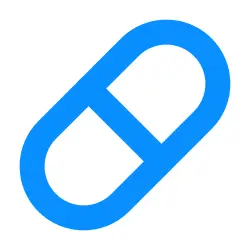Treatments (0)
Advice for Oral Thrush
Oral thrush symptoms can vary but commonly include:
- White, creamy, or cottage cheese-like patches on the tongue, inner cheeks, roof of the mouth, or throat
- Redness or soreness in the affected areas
- Loss of taste or a cottony feeling in the mouth
- Cracks and redness at the corners of the mouth (angular cheilitis)
- Pain or burning sensation while eating and drinking
- In severe cases, difficulty swallowing (dysphagia) if the infection spreads to the throat or oesophagus
If left untreated, oral thrush can spread beyond the mouth, especially in people with weakened immune systems.
Treatment for oral thrush aims to eliminate the fungal infection and prevent recurrence. The most common treatment options include:
-
Antifungal medications:
- Nystan Oral Suspension (Nystatin) – A liquid antifungal treatment that is swished around the mouth before swallowing or spitting out. It is commonly prescribed for mild to moderate oral thrush.
Managing underlying conditions:
- Keeping blood sugar levels stable for those with diabetes to reduce the risk of recurring infections.
- Strengthening the immune system through a balanced diet, hydration, and proper medical care, especially for those prone to infections.
Preventing oral thrush involves maintaining good oral hygiene and addressing risk factors that contribute to Candida overgrowth. Key prevention strategies include:
- Brushing and flossing daily to maintain oral health.
- Using antifungal mouth rinses if prescribed, especially for those with recurring infections.
- Avoiding excessive sugar and refined carbohydrates, which can encourage yeast growth.
- Cleaning and soaking dentures overnight to prevent fungal buildup.
- Rinsing the mouth after using inhaled corticosteroids to remove residue that may promote Candida growth.
- Maintaining a healthy immune system by eating a balanced diet, staying hydrated, and managing medical conditions.
For individuals prone to recurrent oral thrush, regular dental check-ups and a preventive antifungal routine may be necessary to keep infections under control.
Oral Thrush FAQs (7)
Oral thrush is a fungal infection caused by an overgrowth of Candida albicans in the mouth, leading to white patches, redness, and discomfort.
It occurs when there is an imbalance in the mouth’s natural flora due to weakened immunity, antibiotic use, diabetes, dry mouth, inhaled corticosteroids, or wearing dentures.
Common symptoms include white, creamy patches on the tongue or inner cheeks, redness, soreness, loss of taste, and pain when eating or drinking.
Mild cases may improve, but most require antifungal treatment. Without treatment, the infection may spread or worsen.
Infants, elderly individuals, people with weakened immune systems, diabetes, dry mouth, or those using inhaled steroids or antibiotics are at higher risk.
Maintain good oral hygiene, brush teeth twice daily, rinse after using inhalers, clean dentures, and limit sugary foods that promote fungal growth.
Oral thrush is not highly contagious, but Candida can spread through kissing or sharing utensils if someone has a weakened immune system.

